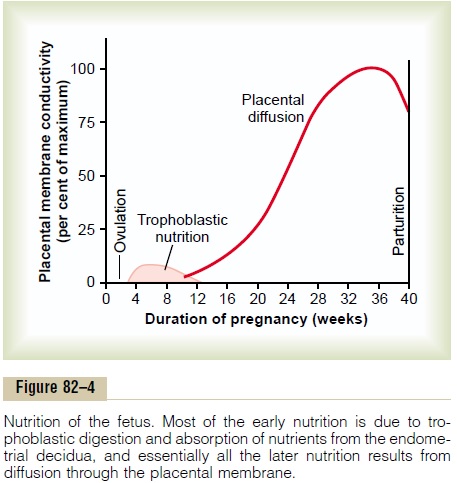Chapter: Medical Physiology: Pregnancy and Lactation
Early Nutrition of the Embryo
Early Nutrition of the Embryo
We pointed out that the progesterone secreted by the ovarian corpus luteum during the latter half of each monthly sexual cycle has an effect on the uterine endometrium, converting the

Then, when the conceptus implants in the endometrium, the continued secretion of proges-terone causes the endometrial cells to swell further and to store even more nutrients. These cells are now called decidual cells, and the total mass of cells is called the decidua.
As the trophoblast cells invade the decidua, digest-ing and imbibing it, the stored nutrients in the decidua are used by the embryo for growth and development. During the first week after implantation, this is the only means by which the embryo can obtain nutrients; the embryo continues to obtain at least some of its nutrition in this way for up to 8 weeks, although the placenta also begins to provide nutrition after about the 16th day beyond fertilization (a little more than 1 week after implantation). Figure 82–4 shows this tro-phoblastic period of nutrition, which gradually gives way to placental nutrition.
Related Topics